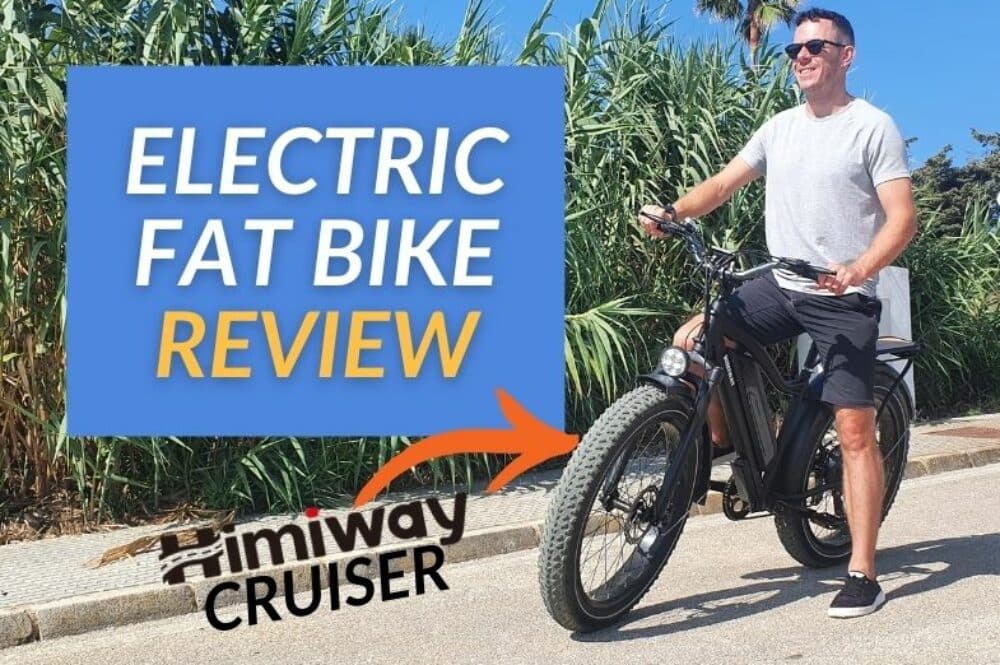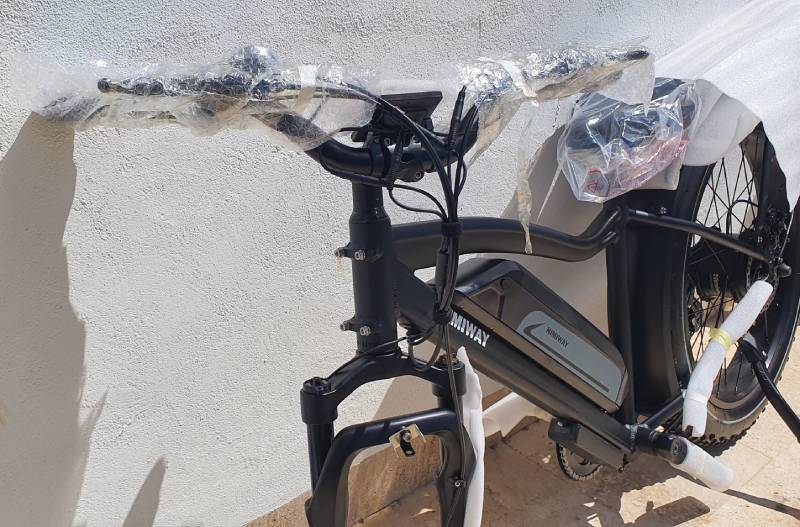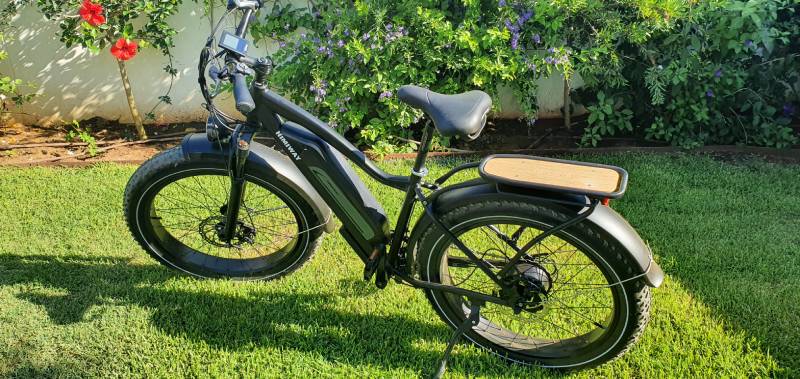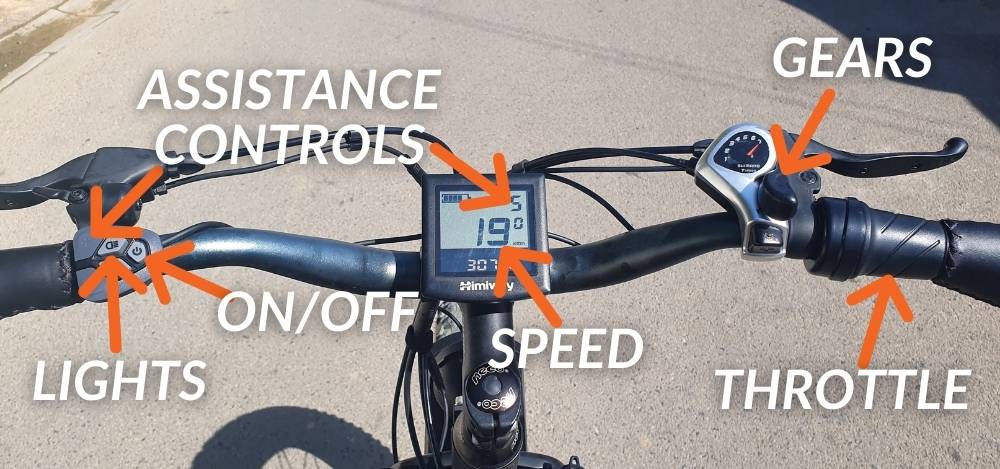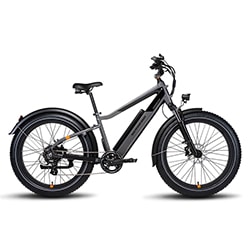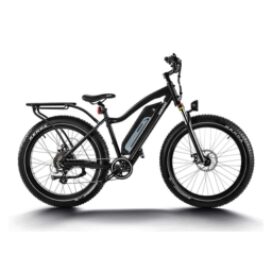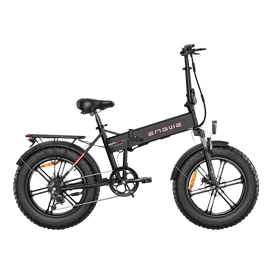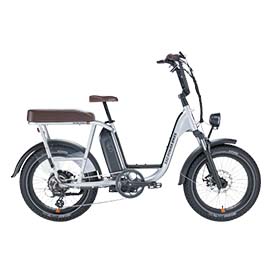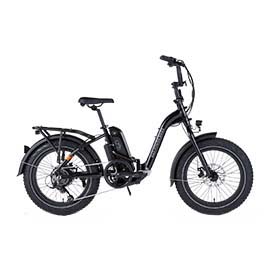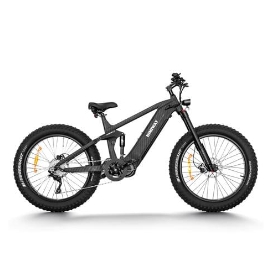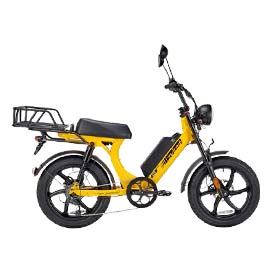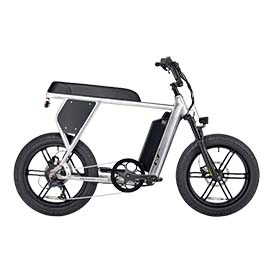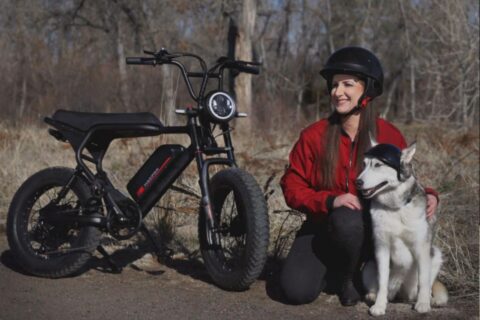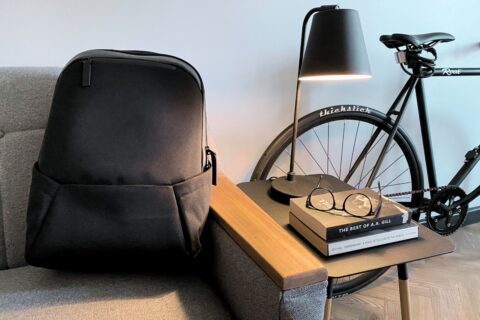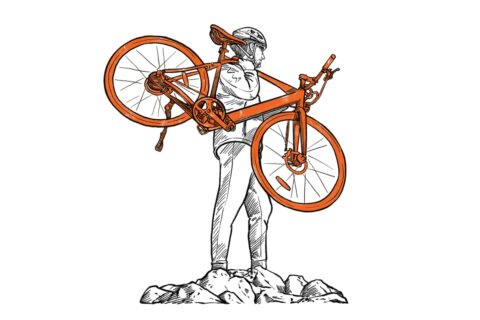This post may contain affiliate links, which help to keep Discerning Cyclist rolling. Learn more.
I live in Southern Spain.
That means that we can enjoy 300 days of sunshine per year.
It also means that for three months in the summer, it’s absolutely roasting – which is great if you want to lie on the beach. But if you live here and want to cycle to your office each day – like I do – arriving in a sweaty mess is inevitable.
I’d been thinking of getting an e-bike for a while to help deal with these hot days, so when Himiway Bikes got in touch with me asking if I’d like to test out one of their bikes, I was thrilled.
The thing is… Himiway don’t make dainty little bikes, they make monster fat bikes that are packed with power.
I’d never actually ridden a fat bike before, but I had heard that although they are good to ride on difficult terrain, they are also pretty heavy and slow. Therefore, the combination of a fat bike with electric power seemed perfect.
Anyway, I got hold of the Himiway Crusier and for the past couple of months I’ve been putting it through its paces.

Getting Started
Prior to getting this bike, I’d only ridden an electric bike a handful of times – and they were always hire city bikes.
But when I got the Himiway Cruiser, I realised it was a different beast.
For starters – having had to carry the package after it was delivered – it is heavy. 72lbs (or 32kg) to be exact, which is well over double the weight of the hybrid bike I normally ride. 4kg of this weight can be assigned to the battery alone. But this hefty weight isn’t all together surprising considering it is an electric fat bike, after all electric bikes are typically weigh around 20kg and then fat bikes are well… fat.

Assembling the Himiway Cruiser
The bike arrived in a semi-built state, which meant I had to attach the wheels, handlebar, seat, lights, fenders and pedals to the bike, plus plug in the electric cables.
As someone with zero bike mechanic skills, this felt a little intimidating at first. The written instructions were almost useless too, but fortunately I discovered Himiway have an excellent video on their website which shows you how to assemble the bike. With the help of this video, I was able to fly through assembly and it took about an hour for me to do so. If you have a clue about the mechanics of a bicycle, though, this would take you no time at all.
First Ride
With the bike now in one piece, I was ready to take my bike for a test spin.
All things electrical on the bike are managed by the controller which sits next to the left handle. Here you can switch the power on and off, manage the power setting you want to use and switch the lights on and off.
To switch the bike on, you just need to hold the power button down for a few seconds and you’ll see the bike is on when the computer, in the middle of the handlebars, turns on.
After doing this, I got a shock as the bike jolted forward while I was holding it. I walked around with the bike for a few more seconds and it did the same again – which made me a bit nervous about even getting on the bike.
Then I realised the bike actually has a throttle on the right handlebar and I’d be unwittingly been turning it as I walked with it.
With this new found information, I started to trust the bike a bit more and decided to take it for a first test ride.
The bike has five power settings, which you can shift through easily by pressing the plus and minus buttons on the controller, with “1” being the least power assistance” and “5” being the most assistance.
Electric bikes take a few minutes to adjust to after riding “normal” bikes for years. The power assistance kicks in as you pedal, so if you don’t pedal, there’s no assistance – unless you turn the throttle.

Himiway Cruiser Top Speed
On the lowest power setting (1) with minimal pedalling effort, the bike will ride at 10kmh (6mph) on flat terrain. On the bike’s top power setting (5), you’ll mostly be riding around at 25kmh (15mph). If you go up a steep hill on the highest power setting, you’ll travel at least 10kmh.
For 90% of the time that I’m riding, I use the full power. However, as I’m leaving or arriving at my destination, I’ll often lower the power, or if I’m stuck in stop-start traffic, I’ll also lower the setting to ensure I don’t unexpectedly plough into someone in front of me.
The Himiway Cruiser also has a 7-Speed Shimano Gear with an easy-to-use thumb shifter on the right handle.
Throttle
At this point I should probably go back to talk about the Throttle. After all, why does a bicycle need a Throttle?
That’s what I thought at first. It’s a nice-to-have on flat terrain as you can move off with no effort, but when you face moving off on a steep hill, the throttle is indispensable – really.
There’s a junction on a hill halfway through my commute. The first time I tried to do this on this bike, I wasn’t that accustomed with the throttle and I simply couldn’t move the bike forward as it is such a heavy bike.
However, a few days of practice, I got it down.
When approaching this junction, I drop into the lowest gear. Then, when I move off, I don’t even worry about pedalling at first, I just turn the throttle and the bike starts climbing of its own accord until I start assisting it.
At this point I wouldn’t even consider getting an electric fat bike unless it did have a throttle.

Himiway Cruiser Battery Life
The 840wh battery pack for the Himiway Bike sits on top of the downtube and requires a key in order to remove it. The good news here is that the battery is extremely easy to attach and remove.
You can check the battery level at any time by holding down the button on top of the battery. Himiway say that this bike has a range of roughly 35 to 60 miles (56 to 96 km), with Himiway saying you can get over 60 miles on pedal assist mode (i.e. the lowest power setting) and around 35 miles on the highest power setting.
I’ve found that on my short but hilly commute, I typically manage to get about 30 to 40km of use from each charging while riding around almost exclusively on the highest power setting. For me, this equates to about a week’s worth of commuting from each charge.
When it comes to charging the battery pack, I found it takes about 4 hours to charge it from empty to full.
Lights
One of my pet peeves in life are bicycle lights. If you get removable bike lights they are easy to charge but you always have to carry them around in your pockets or your bag, or you get fixed bike lights and they’re great until you have to fiddle around to remove them so they can be recharged.
I had dynamo lights on my old bike and I simply loved the convenience of them as you simply never need to worry about your lights.
And while the Himiway doesn’t have Dynamo light, it does have buit-in front and back lights that take energy from the battery pack. For me this is ideal and you can simply switch the lights on and off as you wish from the handlebar controller.

Fat Bike Life
Now, I’ve mostly been speaking about the electrical aspects of the Himiway Cruiser, but I’d now like to mention the Fat Bike elements. After all, this is a big bike.
At first, I must admit I was quite self-concious about riding such a bike. And there’s no doubt you attract more than your first share of passing glances, with many people intrigued by the bike – especially when you’re flying up a hill without breaking a sweat.
But after a while, I must admit I kind of started to like the attention.
The look and feel of the bike probably feels more akin to riding a moped rather than a standard bicycle.
But where this bike really comes into its own is on bumpy surfaces.
Fat bikes have essentially been built to deal with difficult terrains like sand, mud and snow and there are some things that an electric fat bike can do with ease that you’d struggle to do on any other bike.
The moment I really recognised this is when I went up a really steep, bumpy and sandy track that my car usually struggles on, much less my hybrid bike. But with the fat tyres on this bike plus the electric assistance, I had a lot of fun as a flew up this track with no problem or discomfort.

Do You Sweat Less on an Electric Bike?
I’d like to circle back to why I wanted an electric bike in the first place.
In the heat of summer, riding a normal bike on a pretty up-and-down route into town causes me to arrive at my destination extremely sweaty.
However, even in 30-plus degree temperatures, I arrived at my office in the freshest possible condition after riding my e-bike.
Not only did it make the hills so easy to take on, but I actually found myself feeling even cooler than if I had walked as the breeze hitting me as a I flew into town would actually cool me off as I went.
Overall, I want to say this bike has surprised me.
I wasn’t sure if I was going to love it when I received it but after gaining an appreciation for the usefulness of both electric bikes and fat bikes, I have to say this is the perfect combination
Like most electric bikes, it isn’t cheap. But actually compared to many other similar models, it’s actually very good value. The Himiway Cruiser retails for $1,699 / £1,699 / €1,699 with Himiway having distribution centres in America and Germany.
Himiway Cruiser Alternatives
-
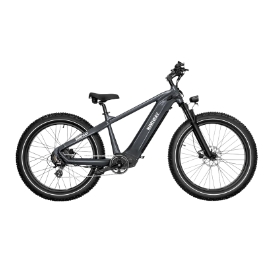
Best Fat E-Bike
Himiway Zebra
The Himiway Zebra is basically an updated version of the Cruiser, with a more stylish design and better range
-
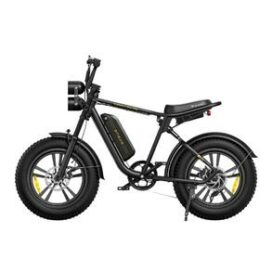
Budget pick
Engwe M20
Not only is this fat e-bike amazing value, but it looks absolutely stunning. Very popular for good reason.
-

Ultimate mobility for any age
Cyrusher Kommoda
Step through design and dual-suspension used to make it comfortable for absolutely anyone to ride.
- Show more

